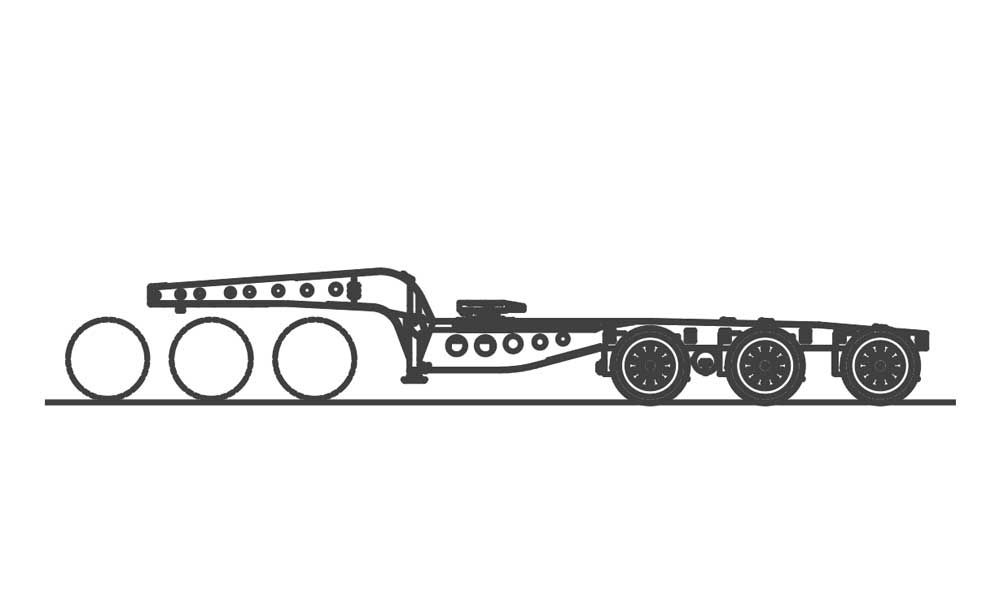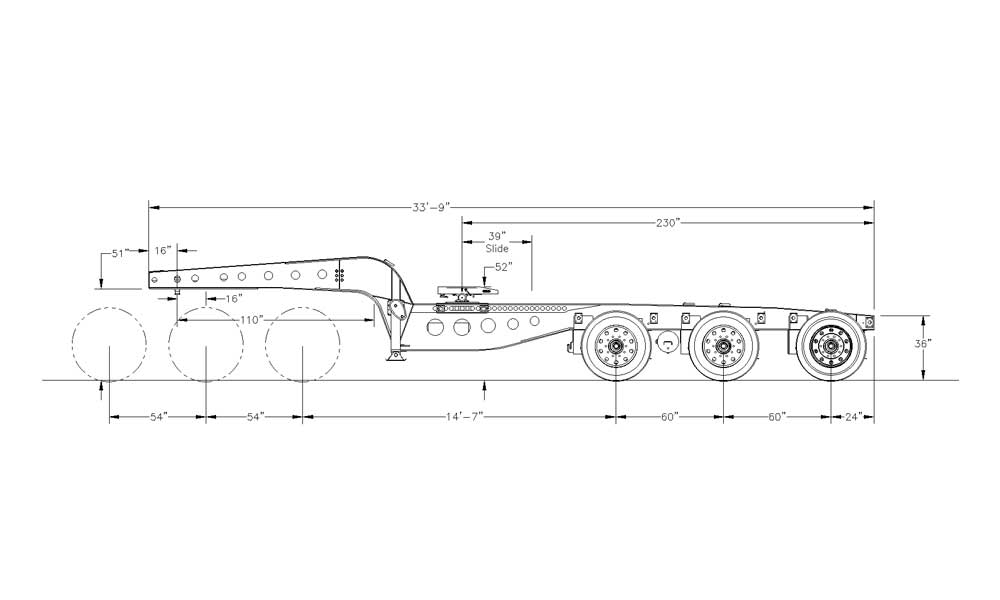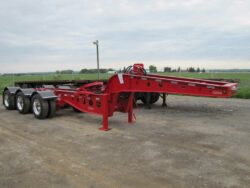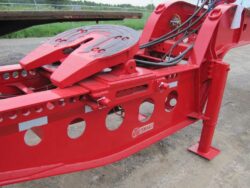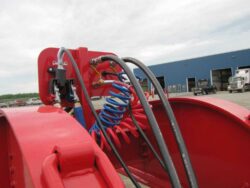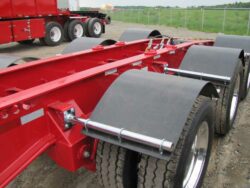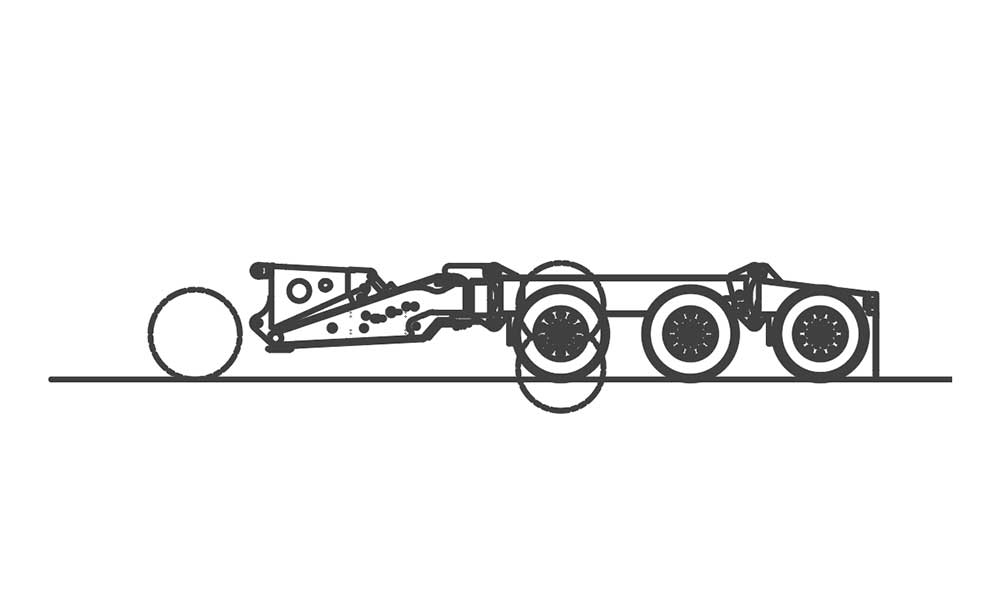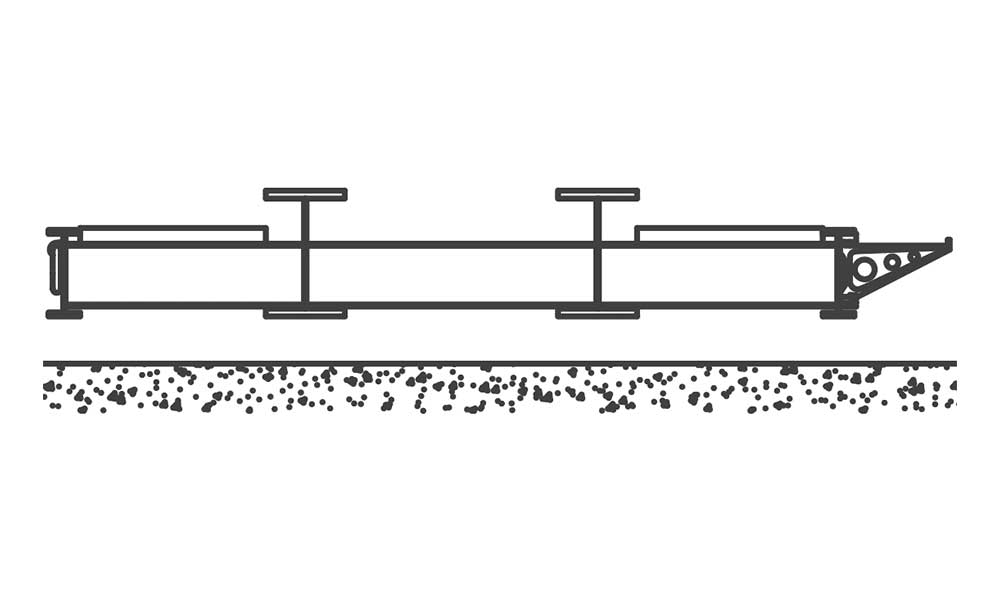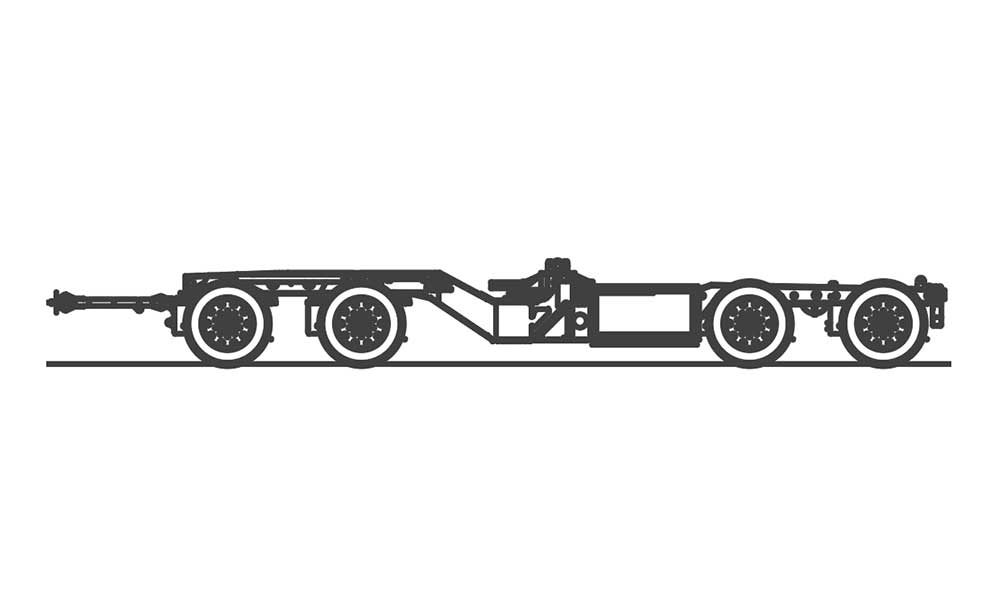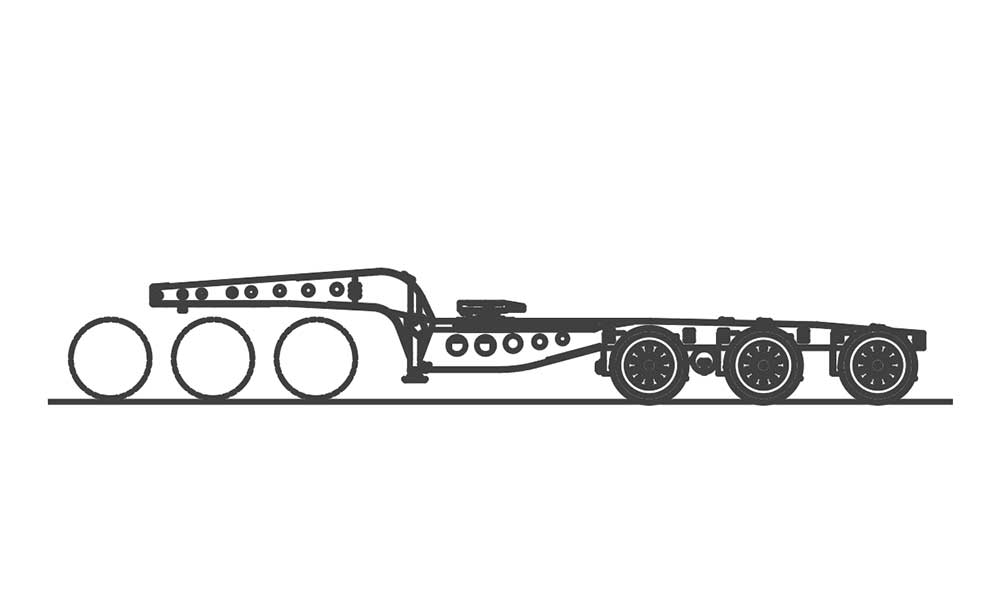The dual king pin settings in the front coupler are made so it can be used with a tandem or tridem truck. The extra long slide on the fifth wheel is meant to adjust the weight division between the truck and jeep.
Components
Quick Specs
Length
N/A
Width
N/A
Height
N/A
Weight
4,774 kg
Tridem Axle Long Jeep
Advanced Details
1
| Permissible loading | 121,250 pounds |
2
| Inter-axle spacing | 14.7 feet |
3
| Min swing radius needed | 200 inches to 238 inches |
Capacity
Minimum Payload
30,030 kg
Maximum Payload
55,000 kg
Minimum Carrying Height
52 in
Maximum Carrying Height
54 in
Tare Weight
3,765 kg
Ask us about the Tridem Axle Long Jeep
Send us a message to learn more about this Temisko product.

